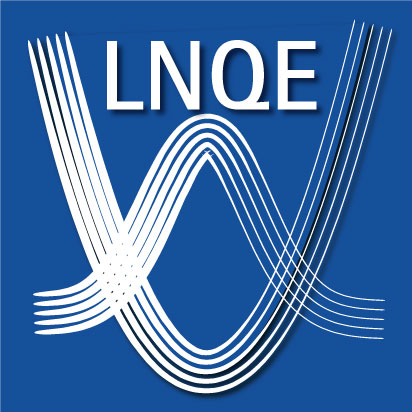Theory of two-electrons optics experiments with smooth potentials
14.11.2022, 15:00 Uhr
Laboratorium für Nano- und Quantenengineering (Gebäude 3430), Foyer, Schneiderberg 39, 30167 Hannover, Leibniz Universität Hannover
Dr. Peter Silvestrov, Institut für Mathematische Physik, TU Braunschweig
Large experimental progress in tomography of quantum Hall edge electrons have been achieved in recent years, leading to production of sufficiently coherent single- and two-electron distributions with the sizes of several 10-ths of nanometers and the possibility to measure details of these distributions. Here, we consider the effect of interaction between two electrons on the real time evolution of such distributions in the experimentally relevant case of smooth confining and quantum point contact (QPC) potentials. Both Hanbury Brown & Twiss and Hong-Ou-Mandel setups are investigated. The theoretical consideration is strongly simplified due to the possibility of the separation of coordinates leading to the independent motion of the center of mass and the motion of the relative coordinate of two electrons. The most prominent effect of this separation is the prediction of molecular states, where two electrons propagate together along the center of mass trajectory while simultaneously rotating around each other. The existence of a number of such molecular states should naturally strongly affect the outgoing electrons' distribution in the Hanbury Brown & Twiss kind of experiments. But also in the Hong-Ou-Mandel setup we predict new effects due to the quantum tunnelling of two electrons colliding at the QPC into the joint molecular states. As a specific measure of the interaction we investigate the probability for both injected electrons to stay an anomalously long time at the QPC.






